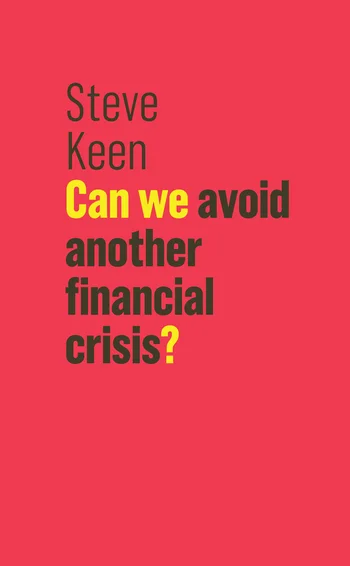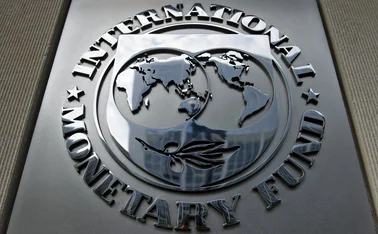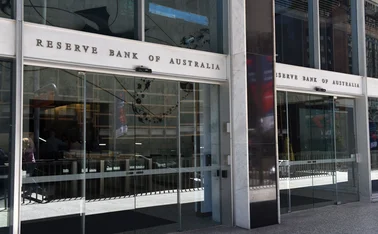
Book notes: Can We Avoid Another Financial Crisis?, by Steve Keen
Steve Keen challenges “mainstream” economic thinking in this concise book

Steve Keen, Can We Avoid Another Financial Crisis?, Polity, 2017, 140 pages
From the outset, Steve Keen shows himself to be the outsider. One of the select few to have warned of impending trouble before 2008, he aligns himself with the likes of Raghuram Rajan, who was all but laughed off the stage for his 2005 Jackson Hole speech ‘Has financial development made the world riskier?’. In the aftermath of the crisis, “mainstream economists” – as Keen derogatively describes adherents of New Keynesian economics – are perhaps beginning to recognise their hubris.
All the same, Keen is unimpressed with their efforts to reform the central architecture of their thinking, the dynamic stochastic general equilibrium (DSGE) model. He asks how a model that ignores money can be used to guide monetary policy: “Using DSGE models, official economics bodies like the [Organisation for Economic Co-operation and Development had] forecast that 2008 was going to be a bumper year.”
In the space of 100-odd pages, Keen manages to deliver a sharp critique of the ills of New Keynesian thinking, set out his alternative model, identify the alarmingly large set of countries he believes are still vulnerable to another major financial crash, outline a possible solution, and conclude we are all doomed, anyway, because politicians will never listen to what is quite a radical solution.
But despite its radical endpoint, Keen builds his argument from plausible materials. Ironically, given that he sets out to tear down New Keynesianism, he is full of praise for the man whose name that discipline appropriated. John Maynard Keynes saw early on that the future was full of uncertainty, but people act as though the good times will continue forever. Such herd behaviour (“animal spirits”) creates exuberant booms and then deep busts.
“Fundamental instability” of capitalism
It is the work of Hyman Minsky that contributes the most to Keen’s alternative model, however. Minsky wrote of the “fundamental instability” of capitalism, with optimism about the future pushing investors into speculative risk-taking. The moment investors realise their mistake and the bubble bursts has come to be known a “Minsky moment”. Keen has long been an adherent, but other economists are also now dusting off Minsky’s work.
Such thinking underpins the complex interactions at the heart of Keen’s model. He rejects what he sees as the implausibly perfect numerical solutions to DSGE models, arguing instead the economy should be modelled as a system of complex interlocking parts, where cycles are generated internally, not imposed as shocks from outside. Despite the complex interactions, Keen stresses his model is actually much less complicated than a typical DSGE. It is formed by the interaction of three pieces of theory: employment will rise if output growth exceeds population and productivity growth; the percentage share of wages will rise if wage demands exceed labour productivity; the debt-to-GDP ratio will rise if debt grows faster than GDP.
From these “truisms”, and a set of statements describing the relationships between them, Keen is able to construct a model that appears to reflect the experience of the ‘Great Moderation’ and subsequent crash. The model predicts an initial period of calm as investor optimism creates a rapid acceleration of growth, but boom turns to bust, volatility rises, and there is ultimately a “complete collapse” of the model.
The “smoking gun”
Keen believes the “smoking gun” at the scene of every financial crisis is the level of debt and the change in credit growth. He starts from the idea of money being created as banks originate loans, and continues with the assumption money is borrowed to be spent. In this way, credit has a crucial link to demand, and therefore growth, which is ignored by many “mainstream” models. If you accept these propositions, some simple arithmetic is enough to show that when debt becomes sufficiently high, a slowdown in credit growth will be enough to trigger a recession. “Credit has thus been a serial ‘zombifier’ of economies, turning once vibrant economies into the ‘walking dead of debt’,” Keen argues.
Credit has thus been a serial ‘zombifier’ of economies, turning once vibrant economies into the ‘walking dead of debt’
Steve Keen
Based on this idea, he picks out a set of countries that are now in the “danger zone”, with private debt levels at more than 150% of GDP and credit growth of more than 10%. Many countries that are widely seen as having relatively well-managed economies fall into this category, including Denmark, Ireland, Norway and Spain. Less deep in the danger zone are the UK and US, Australia, Sweden and New Zealand.
Keen believes the only way to avert a perpetual cycle of crises and bring economies back onto a sustainable footing is to tackle the debt mountain, which would allow economies to cope better with fluctuations in credit growth. He advocates what he calls a “modern debt jubilee”, a form of helicopter money where people are expected to use the cash windfall to pay down debts first and spend second. He is far from optimistic such a proposal could be implemented in practice, but calls for the private debt-to-GDP ratio to enter mainstream political and economic discourse, which could be a valuable first step.
Keen has been pushing these ideas for decades, but with a degree of introspection now happening in economics, and some central banks, such as the Bank of England, showing a willingness to rethink old ideas, it seems he might at last stand a chance of making people listen. Many economists – a decent number of them at central banks – are advancing methods of modelling complex systems to generate the sorts of instability we see in the real world. Meanwhile, the debate over the likes of helicopter money shows the potential for radical thinking remains, even if such ideas remain far from a political reality.
Keen’s argument perhaps oversimplifies in places – for instance, it gives little regard to the variety of factors that might affect debt serviceability. But his message is important. If the mainstream of economics can readjust its thinking on debt, that could set the stage for more thoughtful political debate.
Only users who have a paid subscription or are part of a corporate subscription are able to print or copy content.
To access these options, along with all other subscription benefits, please contact info@centralbanking.com or view our subscription options here: http://subscriptions.centralbanking.com/subscribe
You are currently unable to print this content. Please contact info@centralbanking.com to find out more.
You are currently unable to copy this content. Please contact info@centralbanking.com to find out more.
Copyright Infopro Digital Limited. All rights reserved.
You may share this content using our article tools. Printing this content is for the sole use of the Authorised User (named subscriber), as outlined in our terms and conditions - https://www.infopro-insight.com/terms-conditions/insight-subscriptions/
If you would like to purchase additional rights please email info@centralbanking.com
Copyright Infopro Digital Limited. All rights reserved.
You may share this content using our article tools. Copying this content is for the sole use of the Authorised User (named subscriber), as outlined in our terms and conditions - https://www.infopro-insight.com/terms-conditions/insight-subscriptions/
If you would like to purchase additional rights please email info@centralbanking.com








